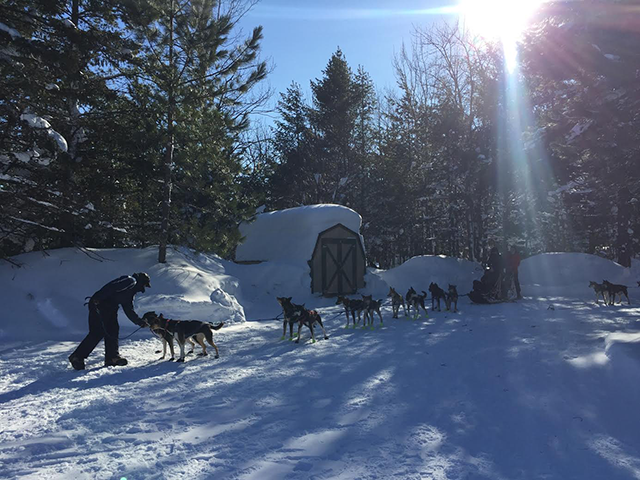As Ph.D. students, we tend to have full work schedules and large writing projects to work on during every minute we don’t spend in meetings, on conference calls, running experiments, teaching, or presenting our research at conferences. It can be difficult to find adequate time and space for reflection, which is not only essential to research, but to learning and personal growth.
I believe that reflection time away from our known physical and intellectual surroundings can not only improve the quality of our intellectual work–generating new ideas, drawing conclusions from analyses, providing recommendations based on our findings–but also help us reflect on who we are (becoming), how our values connect with our work, what our strengths are, how the continuous process of research, learning, and teaching is shaping us, and how we can best utilize all we have learned to have a positive impact somewhere in the world. I don’t know about you, but for me, physically getting away from all the places I usually work in is necessary for productive reflection and the generation of those really good new ideas that lead to a breakthrough in our research or new career goals and opportunities.
With busy schedules and limited funds, most graduate students are not able to travel unless it is for a conference or research group meeting. One opportunity I recently took advantage of is the University of Michigan Outdoor Adventures program, which offers year-round guided trips of varying lengths to destinations around the country that invite a specific kind of outdoor activity, all at an affordable cost.
The trip I decided to go on took us to Michigan’s Upper Peninsula for a weekend of dogsledding and cross-country skiing. Every part of this trip exceeded my expectations. Five hours of quiet cross-country skiing through a beautiful forest followed by a hike to frozen waterfalls and Lake Superior provided the needed reflection time and intellectual and emotional distance to the usual surroundings, while dogsledding provided emotional rejuvenation and pure joy.
I had never gone dogsledding before, mostly because I have never lived in a region where that was possible, prior to coming to Michigan. Our group of ten undergraduate and graduate students spent almost an entire day at Husky Haven Kennels in Shingleton, Michigan, where we had time to get to know the two owners and their 50 Alaskan Huskies, help to ready the sled, and of course go for a ride. After the tour, we shared adventure stories over hot chocolate.
Meeting the owners, Kim Darst, a helicopter pilot, and Jean Pollock, retired school teacher, was a highlight in itself. Kim became the youngest helicopter pilot in the world when she received her license at age 17. In 2009, she participated in the famous Iditarod sled dog race in Alaska, as the first person from New Jersey to join the race. Jean assisted Kim with her training and the handling of the dog team at the start of the race. Iditarod is an extreme 1,000 mile race from Anchorage to Nome, which celebrates the traditional importance of sled dogs to the Native and immigrant populations of Alaska, not just as an effective means of transportation for everyday needs, but also to save lives, e.g., in 1925, when Nome was struck by a diphtheria epidemic and medical supplies were brought to the town via dog sleds, along the Iditarod Trail.
Before our own tour on the dog sled, we had a chance to help Kim and Jean harness all the dogs and put ‘booties’ on the dogs’ feet – little neon socks that protect their paws from ice and snow. We each had the chance to try out sitting in the front of the sled, and to stand on the runners in the back of the sled, in the driver’s position (of course still with an experienced musher on the sled, doing the actual work). I loved our tour just as much as learning about this unique sport from Kim and Jean, hearing their stories about the Iditarod race, and having time to get to know the other dogs in the kennel.

Kim Darst, owner of Husky Haven, readying the sled.
Since a Ph.D. student, even one who is trying to get some away-time for quiet reflection, never really stops thinking about their topic of inquiry, I have to say I was impressed by how much I think can be learned about communication and leadership from dog sled racing. Each dog has their own personality, strengths, and what can perhaps be described as a leadership style. The musher has to know their team and assign each dog to the position where they can be most effective as a team member. Leading a dog team takes cooperation and coordination among the dogs, as well as between musher and dogs. Goals need to be communicated clearly and with confidence, feedback needs to be timely and appropriate, and patience is key – all principles any effective leader should follow.
In the end, not only did I get my reflection time and some exercise during those two days, but got to see frozen waterfalls, heard exciting stories about an Alaskan long-distance race, and learned about leadership from a pack of dogs. You may not be the type of person who needs to get away in order to reflect effectively, but making a little bit of time for active reflection in whichever form works best for you is important for our learning, creativity, and well-being.
